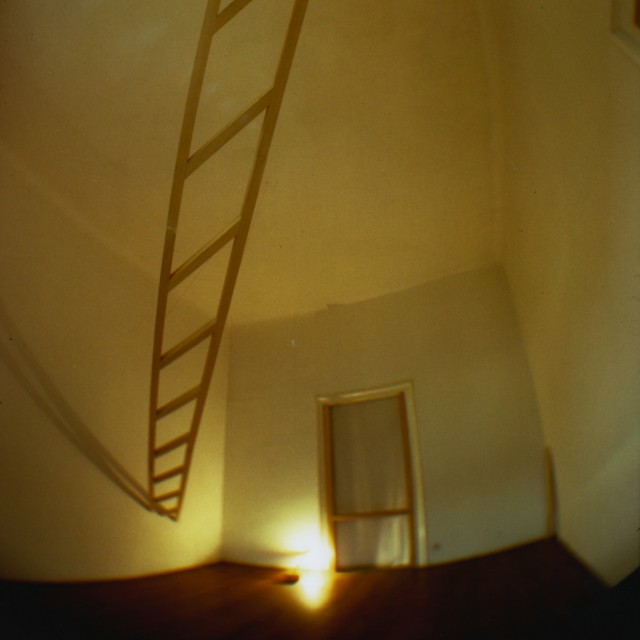Since the early 1970s the artistic practice of Marco Bagnoli (Empoli) has been divided between drawing, painting, sculpture, environmental and sound installation, combining them with each other in a pervasive synthesis, aesthetic datum and scientific statement, theories of vision and color and iconological research, ancient knowledge and a moving experience of space and time, in which the work explores the ramifications of thought, becoming a matrix of knowledge, both rational and intuitive. The intervention of Marco Bagnoli at the Madre museum in Naples, titled La voce. Nel giallo faremo una scala o due al bianco invisibile (“The Voice. In yellow we will make a ladder or two in invisible white”), is part of the project L’ALBERO DELLA CUCCAGNA. Nutrimenti dell’arte (“TREE OF COCKAYNE. Nutrients of art”), curated by Achille Bonito Oliva, presented simultaneously on October 10, at the XI Giornata del Contemporaneo AMACI- Associazione dei Musei d’Arte Contemporanea Italiani, articulated in various art operations throughout the country, in public museums and private foundations.
A first version of La Voce was created by the artist in 1974-75, in the form of a ladder built into the wall of his studio-home in Milan, traversing it diagonally: descending and ascending, the work established a linear arc and a bridge towards the “empyrean” (Germano Celant) as the Earth, or the immaterial with the material, combining physical experience with the metaphysical dimension. The rungs of the ladder were set closer or further apart in keeping with a sidelong perspective drawing, a scale of harmonic tones, frequencies that converge towards an external visual point and, at the same time, parallel to the threshold. In the next version made of iron, the ladder instead rested on a single leg, making ascent objectively unstable but symbolically solid precisely because of the use of a material such as iron. Installed by Adachiara Zevi in 2009 in the ruins of Ostia Antica, La Voce occasionally took on the symbol of Jacob’s ladder by drawing the names of angels on the sides. In the version presented at the Madre the work again changes shape, developing from within the gallery located in the second courtyard of the museum until it goes through the roof and expands into the outer environment. Resting on the light signal of a “tired machine”, writes the artist, the voice emitted by an ampoule dilates into a sound reverberation that flows, through the prolongation of the radial pattern of the rungs of the ladder, into a point outside the gallery, where the Sonovasoro (“Sono vaso oro” = “I am gold vase” or perhaps “sound vase”) is placed. The text issued by the work consists, in this latest version of the work, in the “menu of a Neapolitan meal, marked according to a mathematical and combinatorial order of dishes that eventually proliferate unabated: every word is a flash” ( Marco Bagnoli).
Some of the most prestigious Italian and international museums have devoted solo exhibitions to the artist, including the Castello di Rivoli-Museo d’Arte Contemporanea of Rivoli- Turin (2000, 1992), the IVAM of Valencia (2000), the Centro per l’Arte Contemporanea Luigi Pecci di Prato (1995), the Magasin-Centre National d’Art Contemporain in Grenoble (1991), the Musée d’Art Contemporain in Lyon (1987), the Centre d’Art Contemporain in Geneva (1985) and De Appel in Amsterdam (1984, 1980). In addition to participating in the 10th Biennale de Paris (1976), the Venice Biennale (1982, 1993, 1997), Documenta, Kassel (1982, 1992) and Sonsbeek, Arnhern, (1986), the artist has intervened with site specific works in places of great artistic and architectural value, such as, among others, the Pazzi Chapel, the Sala Ottagonale in the Fortezza da Basso, the Church of San Miniato al Monte and the Boboli Gardens in Florence, and the Palazzo Pubblico in Siena.
